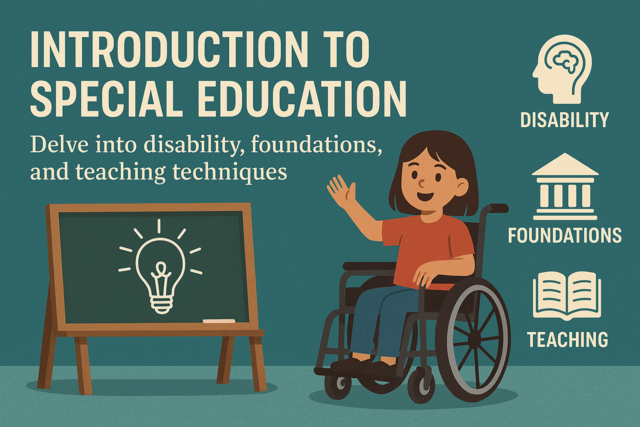Depending on their stage of development, most children will not yet have the emotional and mental maturity to self-discipline completely. Given the right opportunity (an unmanaged, undisciplined classroom), any child, from any geographic area and socioeconomic background, will become unruly and disruptive. Although it seems self-explanatory, many in the field of teaching are not exactly clear on what constitutes classroom management and discipline and how these two concepts work together to create a stable, structured classroom that inspires learning and reduces conflict. This article will clearly define what classroom management and discipline is. It will point out some common discipline problems and their causes. Lastly, the article will address why it is important to devise a plan before entering the classroom. It is vital to understand that classroom management comes first: It is the key in keeping your students in a mode of learning and cooperation. Discipline comes second: It is an action taken to address the problems and situations that overstep the orderly management of the class.
Defining the Term
Many books and articles were consulted to find a clear, succinct, and thorough definition of classroom management and discipline.
Classroom management is a practice that aims to encourage, and establish, student self-control by promoting positive student achievement and behavior. Academic achievement, teacher effectiveness, and teacher/student behavior are all directly linked with the concept of classroom management.
Classroom management focuses on three major components: content management, conduct management, and contract management:
Every teacher already knows, and research supports, that a high incidence of classroom disciplinary problems has a significant negative impact on the effectiveness of teaching and learning. It has been found that teachers who face such issues failed to plan and design appropriate instructional tasks. They may also neglect variety in their lesson plans and rarely, if ever, prompt students to discuss or evaluate the materials they are learning. Additionally, student comprehension is not monitored on a regular basis. Teachers who apply strong and consistent management and utilize organizational skills have classrooms that experience fewer discipline problems.
Discipline Problems and Their Causes
Discipline problems can be as benign as not following minor rules (gum chewing, talking out of turn, chatting with friends, not paying attention, etc.) or major infractions, which are derisive and/or dangerous (violence, bullying, shouting, throwing things, arguing, etc.). One thing is for certain, if continuous minor problems are not addressed properly, they will eventually turn into bigger, harder-to-control issues.
If effective classroom management and student cooperation is defined as "a practice which aims to encourage, and establish, student self-control via the process of promoting positive student achievement and behavior," then it stands to reason that many discipline problems occur when teachers deviate from this path. Tactics such as berating, criticizing, insulting and humiliating produce a negative effect on students. Rather than wanting to cooperate with their teachers, students rebel against unfair treatment and act out either aggressively or passive-aggressively in retaliation. Likewise, fear based discipline will create an environment of stifled resentment rather than positive collaboration. Many discipline problems can be thwarted if the teacher is armed with a solid plan of action and management before problems begin.
Making Decisions about Discipline
The time to make decisions about discipline is before you enter the classroom. Waiting until the school year is underway and you are faced with problems to come up with a discipline plan is not a good route to take. This will cause undue stress for you and your students. It is important to devise a plan for handling various scenarios before you stand before your classroom. Learning the methods presented in the course will arm you with the tools you need to effectively manage your classroom. Doing so will keep problems at bay. In the event that discipline problems do occur, you will also have the tools you need to take prompt action.
Conclusion
Behavior analysis is a theory that focuses on the behavior of people. Specifically, behavior analysis is a method of trying to understand, describe, and predict another's behavior. This model does not look for, or at, mental causes that bring about inappropriate behaviors; rather, it assumes that changes in behavior are related to actual events that take place in the world (not the mind) and that are experienced by the person exhibiting antisocial behavior. This model of classroom management gets its roots in the psychological school of thought called behaviorism. The theory and science of behaviorism was established through the work of three renowned psychologists: Ivan Pavlov, John B. Watson and B.F. Skinner. It works well in the classroom, because this theory addresses the behaviors of students and uses clearly established guidelines of behavior modification to lead the student to esteem-building and self-correction.
Overview
The two major classes of human behavior are operants and reflexes. Operant behavior includes the things we do on a daily basis. Consequences are the events that follow our operant behaviors. If you brush your teeth in the morning, the consequence is clean teeth. If you don't eat breakfast, the consequence is hunger. In all cases, operants are actions we choose to take or not take, and consequences are the result of taking or not taking any particular action. The consequences of our actions influence whether or not we will repeat a behavior. Generally speaking, at the most basic level, pleasure and pain, or comfort/discomfort dictate repeat behavior.
Reflexes are exactly what they sound like, involuntary or "knee-jerk" responses to any stimulus. This behavior is not subject to consequences. Since most of our behavior is of the operant kind, it has been theorized that our behavior changes as the environment changes, presenting us with different consequences.
Behavior Analysis Techniques
There are three main techniques in behavior analysis; each serve to guide the student to appropriate behavior(s), or completion of tasks, by modifying their actions:
1. Chaining: Chaining requires the student to break tasks down into smaller steps. The simplest part of the task is learned first. When the student becomes proficient in that task, the next part of the task is introduced, etc., until the entire sequence is "chained" together to complete the larger, whole task. For example, a student who has trouble writing essays can have the task broken down into small steps until each is mastered: a) formulate an idea b) write a paragraph on the idea c) create an outline d) perform research e) write a rough draft based on the outline and research f) write the essay g) edit the essay h) create a presentable final paper.
2. Prompting: This technique uses a visual or verbal cue to trigger a desired response in the student. For example, a simple negative nod of the head, a frown, the word "no," or "stop," or stern look may be used to thwart negative behaviors; alternatively, a smile, a positive nod or verbal cue, such as the word "yes" or "good" prompts appropriate behavior.
3. Shaping: Shaping is a method of gradually altering a behavior or behaviors with a series of step-by-step rewards as the student gets closer and closer to the desired behavior. Once the student has reached full assimilation of the desired behavior, periodic relapse can be kept in check by the use of prompting.
The behavior analysis method uses a system of consequences and rewards to modify the student's behavior.
1. The first step is for the teacher to identify the behavior they want to change, and prioritize them in order of urgency.
2. The second step is to create a list of misbehaviors and the condition(s) that created those behaviors. This step is vital because accurate observations are needed to help the teacher establish a suitable method of changing the undesirable behavior; it also serves as a reference to go back to in order to see if the behavior has changed enough to warrant continuation of the change method. If progress is not being made, then an alternative method can be used until the behavior correction is made.
3. The third step is to establish a reinforcement method and to consistently follow through with it. What is important to the student you are trying to help (or the group of students)? Do they greatly enjoy outdoor time? Would removing that privilege be a deterrent to negative behavior? Write a list of "unpleasant consequences" that will have an effect on your student(s). Likewise, you need to have positive reinforcers. Simply allowing them to enjoy an activity that they do daily anyway is not a reinforcer. The reinforcer has to be something special and additional to their usual routine. Do your students like impromptu age-appropriate games? A debate on a subject of interest to them? Would they enjoy an art "break," story or craft added to their regular curriculum? The point is to reinforce desired behaviors with a reward that is meaningful and pleasurable to the student(s).
4. The forth step is consistent follow-through. It is absolutely vital to be consistent when applying these steps to behavior modification. If you change your stance on shouting in class from one day to the next, your students will become highly confused. You must stick to your reinforcement methods and use them until the behavior is down to a dull roar. Once your student(s) have modified their behavior to the desired actions, the next unwanted behavior can be worked on. The occasional outburst that occurs at irregular intervals can be managed effectively with quickly re-instating the punish/reward system.
Conclusion
The behavior analysis model uses a method of reward and deterrents to encourage acceptable behavior in students. Understanding the two major classes of human behavior -- operants and reflexes -- can help teachers modify bad behavior and encourage good behavior. Using one, or all three, behavior analysis techniques -- chaining, prompting and shaping -- can work for many situations and with many students. By using the four steps as outlined in this method, a teacher can modify many inappropriate behaviors, or even thwart them before they start.
You Decide Exercise:
A student in Mary's fourth grade class is having trouble doing long division. This student gets overwhelmed at the prospect of dividing three digit numbers, she often gives up and can't finish the seat work she is given. Assuming there are no underlying problems, such as not fully knowing her times tables, using the behavior analysis model, which of the three techniques would work best for this situation?
You Decide Answer:
























